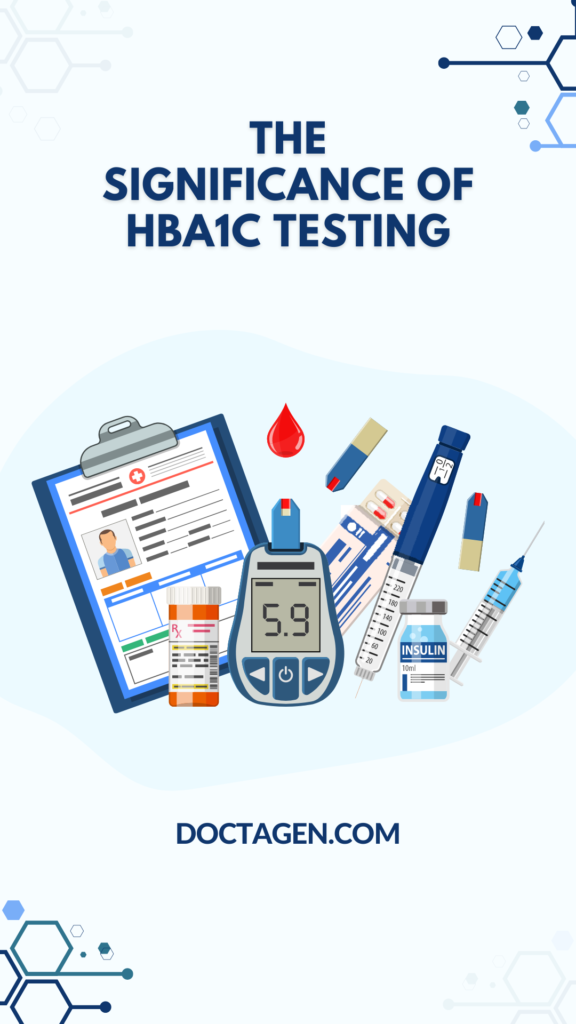Living with diabetes can be a challenge, but with the right knowledge and tools, it’s possible to take control of your health and well-being. If you or someone you know is dealing with type 2 diabetes, understanding the importance of regular glycated hemoglobin (HbA1c) testing can make a significant difference in managing the condition effectively.
Understanding HbA1c: What Is It and Why Does It Matter?
HbA1c, or glycated hemoglobin, is a critical indicator of long-term blood sugar levels. Unlike traditional glucose tests that provide a snapshot of your current blood sugar levels, HbA1c reflects your average blood sugar levels over the past two to three months. This makes it an invaluable tool for monitoring and managing diabetes, as it provides insight into how well your blood sugar is being controlled over time.
Diagnosis and Monitoring: How HbA1c Can Help
For individuals with type 2 diabetes, regular HbA1c testing is essential for diagnosis and ongoing management. The American Diabetes Association recommends an HbA1c level of 6.5% or higher as a diagnostic criteria for diabetes. By monitoring HbA1c levels over time, healthcare providers can assess the effectiveness of treatment plans and make adjustments as needed to help patients achieve optimal blood sugar control.
Prognosis and Risk Management: The Role of HbA1c in Preventing Complications
In addition to diagnosing and monitoring diabetes, HbA1c testing plays a crucial role in predicting long-term health outcomes and reducing the risk of complications. Elevated HbA1c levels have been linked to an increased risk of cardiovascular disease, stroke, and other diabetes-related complications. By keeping HbA1c levels within target range, individuals with diabetes can lower their risk of developing these serious health issues and improve their overall quality of life.
Taking Action: What You Can Do to Control Your Diabetes Status
If you’re living with type 2 diabetes, taking control of your health starts with regular HbA1c testing and proactive management. Here are some action items to consider:
- Stay Educated: Learn as much as you can about diabetes management, including the importance of HbA1c testing and how to interpret your results.
- Follow Your Treatment Plan: Work closely with your healthcare provider to develop a personalized treatment plan that includes regular monitoring of blood sugar levels and lifestyle modifications such as diet and exercise.
- Monitor Your Progress: Keep track of your HbA1c levels over time and discuss any changes or concerns with your healthcare provider. Use this information to make informed decisions about your diabetes management plan.
- Stay Active: Regular physical activity can help improve blood sugar control and reduce the risk of complications associated with diabetes. Aim for at least 30 minutes of moderate-intensity exercise most days of the week.
By taking these proactive steps and staying engaged in your diabetes management, you can reduce your risk of complications and enjoy a healthier, more vibrant life.
Conclusion: Taking Charge of Your Diabetes Journey
Living with type 2 diabetes requires commitment and dedication, but it’s also an opportunity to take control of your health and well-being. By prioritizing regular HbA1c testing and following a comprehensive diabetes management plan, you can reduce your risk of complications and enjoy a better quality of life. Remember, you’re not alone in this journey – your healthcare team is here to support you every step of the way.
Reference:
- American Diabetes Association. “Standards of Medical Care in Diabetes – 2021.” Diabetes Care, vol. 44, suppl. 1, 2021.
HOW TO FIND THE BEST DOCTOR?:
Visit DOCTAGEN.COM for more information and to find the best doctor who matches your genetic information and can treat your disease.

